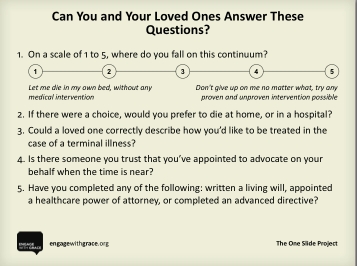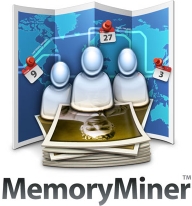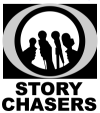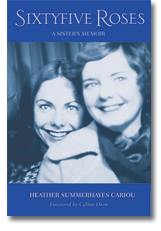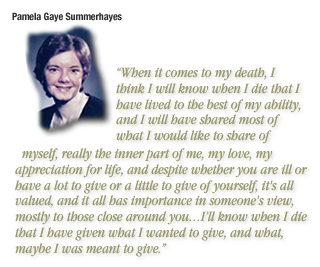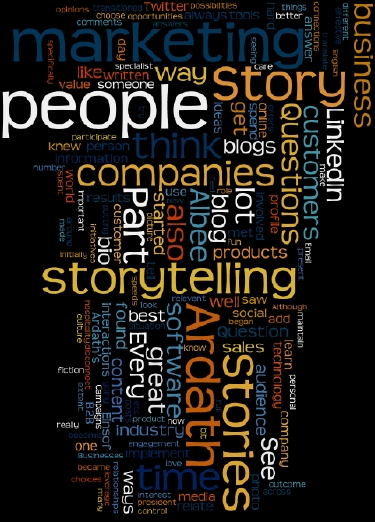
It’s a great privilege to present the 16th in my series of Q&A interviews with story practitioners. I first met Sharon Benjamin in … ahem … the ladies room of the S. Dillon Ripley Center at the Smithsonian in 2005. I was eager to meet her because she and I both earned our PhDs from Union Institute & University. It was through Sharon’s contribution to a Union online discussion group that I first learned of the Smithsonian Storytelling Weekend and the wonderful Washington, DC, Golden Fleece group that has done so much to nurture my storytelling passion. I owe her a lot. See Sharon’s bio below next to her photo.
From the Web site of her consulting firm, Alchemy:
Alchemy principal Sharon Benjamin has built her consulting practice on the foundation of her deep experience leading and working for nonprofits as both a staff person and volunteer. Benjamin has raised more than $75 million for nonprofits since 1980.
Between 1985 and 1989, she was the Vice President for Development and  Finance at the Environmental Policy Institute (EPI). When she arrived, this $1 million organization had a bank loan of $450,000 to cover operating losses, and was holding another $500,000 in soft debt (monies owed to staff and creditors). When she left at the end of 1989, EPI had an operating budget of $3.8 million, no debts and a reserve fund of $500,000.
Finance at the Environmental Policy Institute (EPI). When she arrived, this $1 million organization had a bank loan of $450,000 to cover operating losses, and was holding another $500,000 in soft debt (monies owed to staff and creditors). When she left at the end of 1989, EPI had an operating budget of $3.8 million, no debts and a reserve fund of $500,000.
In January 1990, she joined the staff of the Union of Concerned Scientists (UCS). Her task was to create a foundation giving program. Within 16 months foundation support for UCS had increased from $250,000 to $1.4 million.
At Rails-to-Trails Conservancy (RTC), Benjamin oversaw a 10-person Marketing Department. During her 3.5-year tenure at RTC, organizational revenues increased by an average of 18 percent per year, to a record budget of $5.2 million. Membership increased by a yearly average of 15 percent, to an all-time high of 71,000 individuals. During this time RTC sold over 50,000 copies of organizational publications.
She has organized 35 major special events including the participation of Friends of the Earth in the Paul McCartney Concert Tour of 1989-90; film premieres; major donor trips and receptions; foundation and corporate briefings; and a bluegrass concert at the Lincoln Memorial. Read more here.
Q&A with Sharon Benjamin:
Q: What’s your favorite story about a transformation that came about through a story or storytelling act?
A: One of my favorite transformative moments — when story was key to transforming a group — came in a group of storytellers.
Golden Fleece, a DC-based group of people interested in narrative in organizational settings, used to meet once a month, for an in-person conversation about uses and applications of narrative – it was an interesting, interested group, and extremely diverse – held together almost solely by a topical interest in story. Many people in the group didn’t know (m)any others – there were times when it was clear that the group was having trouble navigating between its many roles — was it an “Association of Organizational Storytellers” a ‘community of storytellers” or all of these things at different times for different reasons……these were rich questions that many of us discussed, contemplated, and navigated………
Anyway, one night, Kelly Cresap, was facilitating and asked the group to think about a time when “they got unstuck” then tell that story (in triads) to one another. After a couple rounds of sharing, it was clear that something big was shifting in the group – Kelly closed the evening by having 3 or 4 people – chosen by the group (re)tell their story to the full group – and in the hush of the circle – looking around at the expectant, rapt faces of both the listeners and tellers, it became so clear that the shift in the group was enormous – from the professional body armor many of us came in wearing, to the emergence of wonder and heart.
The whole session didn’t last more than three hours, and yet, hearing tales of derring do (of the heart, mind and body) in how people got themselves unstuck created a lovely spirit of recognition and learning and authentic camaraderie in that space.
Q: If you could share just one piece of advice or wisdom about story/storytelling/narrative with readers, what would it be?
A: We have to do our own inner work with sufficient aerobic exertion that our own hearts are growing and deepening…because the danger in working with narrative is that we run the risk of, as David Whyte says “reenacting ourselves.” Telling stories in organizational settings (for transformation, change, learning, etc) requires some structure and has does have an inner logic — maybe I should say there are “liberating structures” to using narrative……….and knowing those requires practice and mindfulness – and in developing this mastery the risk is that we can become glib or rote – and the power of story – especially in organizational settings, is directly correlated with our ability to be vulnerable.
So, doing our own inner work is a prerequisite – just as is practice in using of story forms and structure.
Q: Your web site states that the true mark of distinction of your consultancy is “its ability to understand and broker changes at multiple levels, cognitive, emotional, and behavioral in organizations.” To what extent and in what ways do you use storytelling in that process?
A: Stories end up connecting our external experience to our inner sense-making – so, during times of organizational change – which are usually high stress and full of ambiguity with diverse interpretations of what’s happening – stories can provide both opportunities for “norming” the group’s story and, at the same time, expanding the diversity of interpretation of external events – all at the same time.
A: Most of your experience is in nonprofits. What differences do you see in the ways nonprofits and for-profit organizations are or can be using storytelling?
A: Well, in the case of nonprofit organizations that have to raise money, I think there are fierce market forces that require [them] to be pretty good at telling stories that create a compelling vision of a better future……..if the organization can’t tell these kinds of compelling stories it eventually runs into problems raising money, so, I’d say that narrative competence is a basic prerequisite for organizational survival…….
On the other hand, in nonprofit organizations I’ve worked with, seem to have more trouble remembering to use story in-house with boards and staff. Maybe our mindfulness isn’t there, or maybe it’s not as comfortable – story does require a level of vulnerability that may feel riskier with close-in colleagues, rather than telling stories about our work and organizations to funders, donors and the public.
Or maybe we just don’t spend as much time working on our internal use of story as we do telling stories outside the organization.
Generally, compared to corporate or governmental organizations, I’d say many NPOs are advantaged when it comes to external storytelling but maybe a little behind in using story internally.
Using a fictional story followed by thorough analysis of the seven keys to great board governance and effectiveness, The Imperfect Board Member helps board members and CEOs work more effectively and avoid the problems that have plagued companies like Enron and WorldCom. The principal characters in the book represent three main categories of organizations — for-profit companies, non-profit organizations, and faith-based religious organizations. An entertaining page-turner that informs, educates, and motivates while conveying principles that will enable effective governance, the book reveals the Governance Effectiveness Model, describing seven easily understood keys that will help every CEO and board member unlock the door to effective boardroom leadership.



